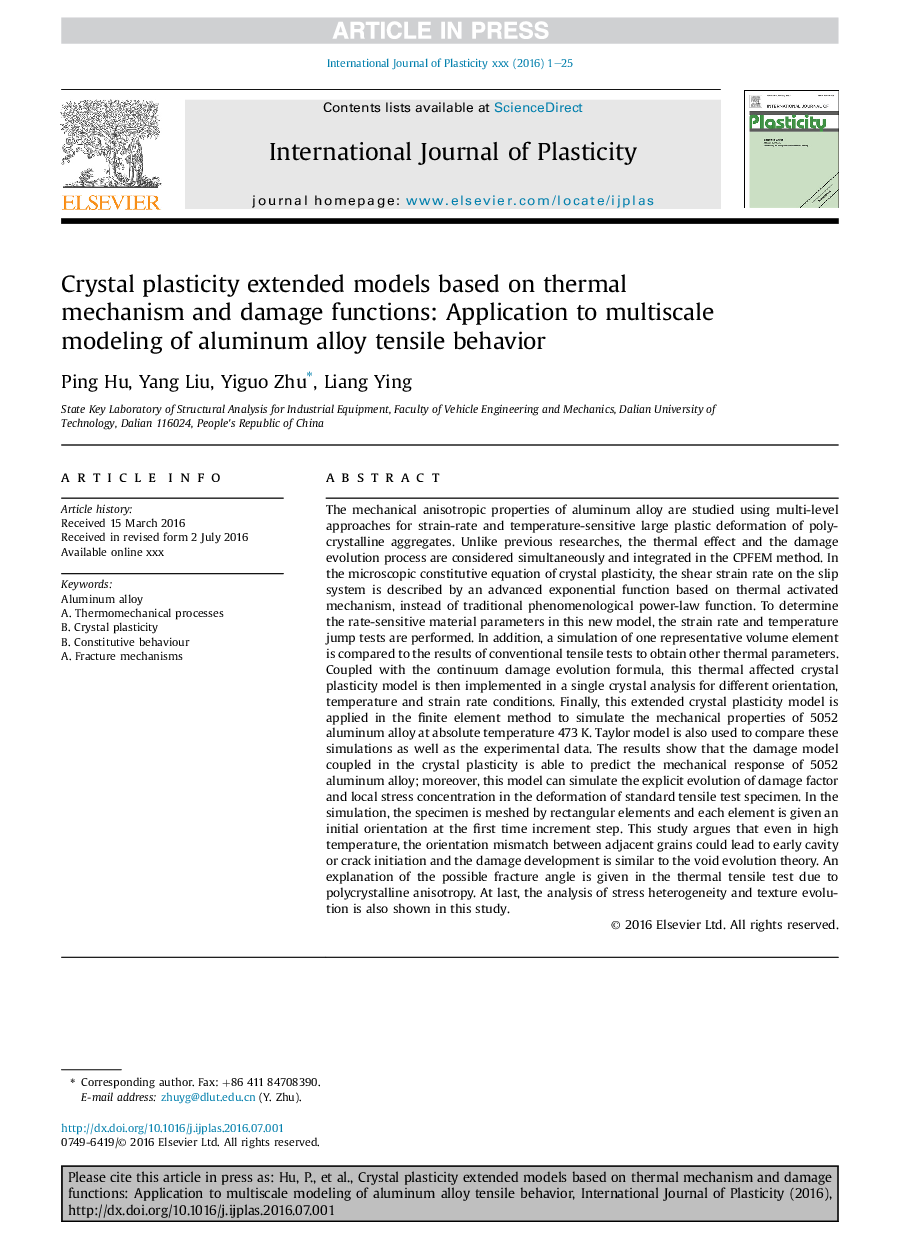| کد مقاله | کد نشریه | سال انتشار | مقاله انگلیسی | نسخه تمام متن |
|---|---|---|---|---|
| 5016828 | 1465587 | 2016 | 25 صفحه PDF | دانلود رایگان |
عنوان انگلیسی مقاله ISI
Crystal plasticity extended models based on thermal mechanism and damage functions: Application to multiscale modeling of aluminum alloy tensile behavior
ترجمه فارسی عنوان
مدل های پلاستیکی کریستالی بر اساس مکانیسم حرارتی و توابع آسیب های توسعه یافته: کاربردی برای مدل سازی چند منظوره رفتار کششی آلومینیوم
دانلود مقاله + سفارش ترجمه
دانلود مقاله ISI انگلیسی
رایگان برای ایرانیان
کلمات کلیدی
موضوعات مرتبط
مهندسی و علوم پایه
سایر رشته های مهندسی
مهندسی مکانیک
چکیده انگلیسی
The mechanical anisotropic properties of aluminum alloy are studied using multi-level approaches for strain-rate and temperature-sensitive large plastic deformation of polycrystalline aggregates. Unlike previous researches, the thermal effect and the damage evolution process are considered simultaneously and integrated in the CPFEM method. In the microscopic constitutive equation of crystal plasticity, the shear strain rate on the slip system is described by an advanced exponential function based on thermal activated mechanism, instead of traditional phenomenological power-law function. To determine the rate-sensitive material parameters in this new model, the strain rate and temperature jump tests are performed. In addition, a simulation of one representative volume element is compared to the results of conventional tensile tests to obtain other thermal parameters. Coupled with the continuum damage evolution formula, this thermal affected crystal plasticity model is then implemented in a single crystal analysis for different orientation, temperature and strain rate conditions. Finally, this extended crystal plasticity model is applied in the finite element method to simulate the mechanical properties of 5052 aluminum alloy at absolute temperature 473Â K. Taylor model is also used to compare these simulations as well as the experimental data. The results show that the damage model coupled in the crystal plasticity is able to predict the mechanical response of 5052 aluminum alloy; moreover, this model can simulate the explicit evolution of damage factor and local stress concentration in the deformation of standard tensile test specimen. In the simulation, the specimen is meshed by rectangular elements and each element is given an initial orientation at the first time increment step. This study argues that even in high temperature, the orientation mismatch between adjacent grains could lead to early cavity or crack initiation and the damage development is similar to the void evolution theory. An explanation of the possible fracture angle is given in the thermal tensile test due to polycrystalline anisotropy. At last, the analysis of stress heterogeneity and texture evolution is also shown in this study.
ناشر
Database: Elsevier - ScienceDirect (ساینس دایرکت)
Journal: International Journal of Plasticity - Volume 86, November 2016, Pages 1-25
Journal: International Journal of Plasticity - Volume 86, November 2016, Pages 1-25
نویسندگان
Ping Hu, Yang Liu, Yiguo Zhu, Liang Ying,
